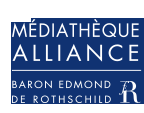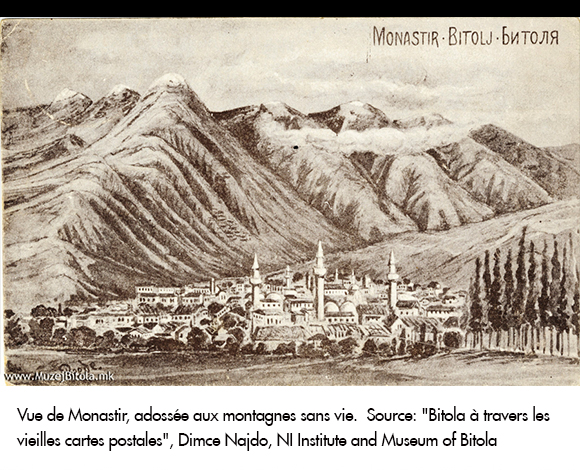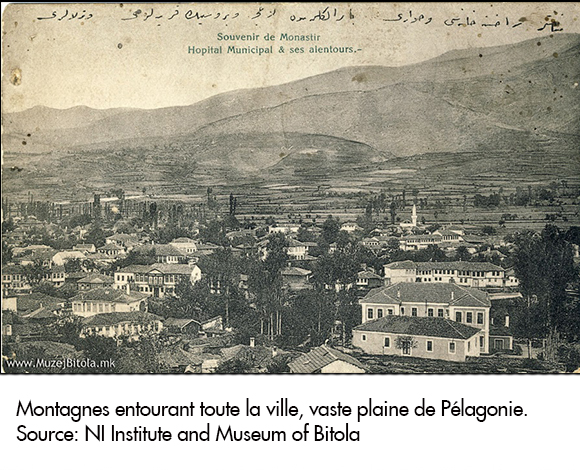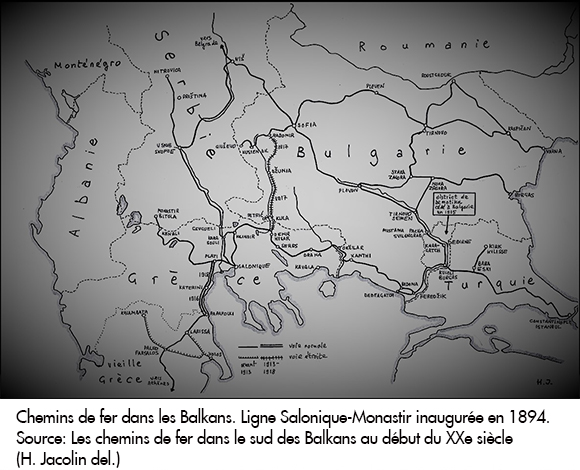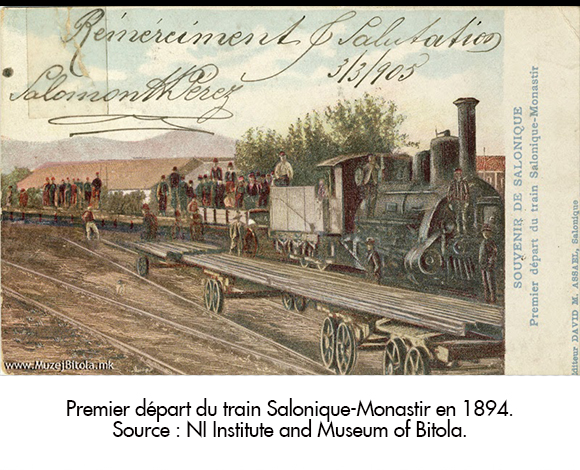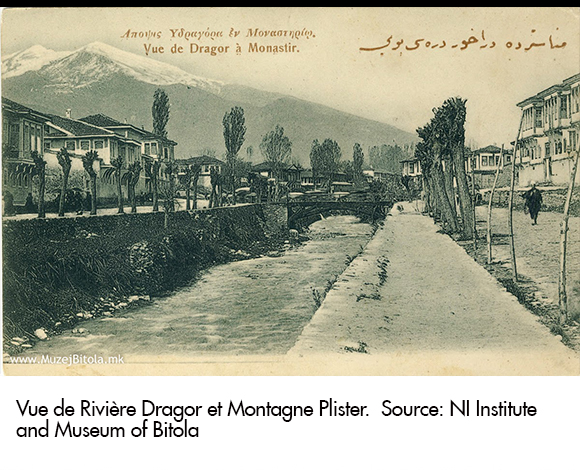I. City 1. Geography
“An activity to be carried out in the midst of a population which has so far lived in isolation and which wishes to emerge from its apathy”
David Lévy (1895-1902)
First director of the AIU school in Monastir
It is not surprising that cultural collapse predominates, in all its primitive forms in all communities of an isolated city like Monastir. The fate of the city seems written by its landscape: on one side surrounded by large and rocky mountains which complicate passage of people, goods and ideas; and on the other side divided by the Dragor River, which distances certain communities. The latter divides the city into geographical axes as well as into Christian and Muslim populations: the south side of the river is inhabited by a Greek population, while the north bank is mainly inhabited by Muslim and Jewish population.
On the other hand, the new railway line became the locomotive of economic development and cultural unification for all the communities of the city. The most palpable consequence of this cultural development is the amplification of educational activities in third countries. The young Balkan nations-states: Greece, Bulgaria, Romania, exert political influence among their proteges, or rather among their co-religionists, in particular via their schools by offering free education for all. In addition, the involvement of Western states is also remarkable in the field of education: the pioneer is undoubtedly France. The catholic schools and the Alliance Française in Monastir and around the world are sponsored by the Quai d’Orsay (the French ministry of foreign affairs). It should be said that all these projects are carried out by the cooperation of the consuls, present in Monastir, and leads to the city’s reputation of “the city of the consuls” or “laboratory of Balkan nationalisms”.


